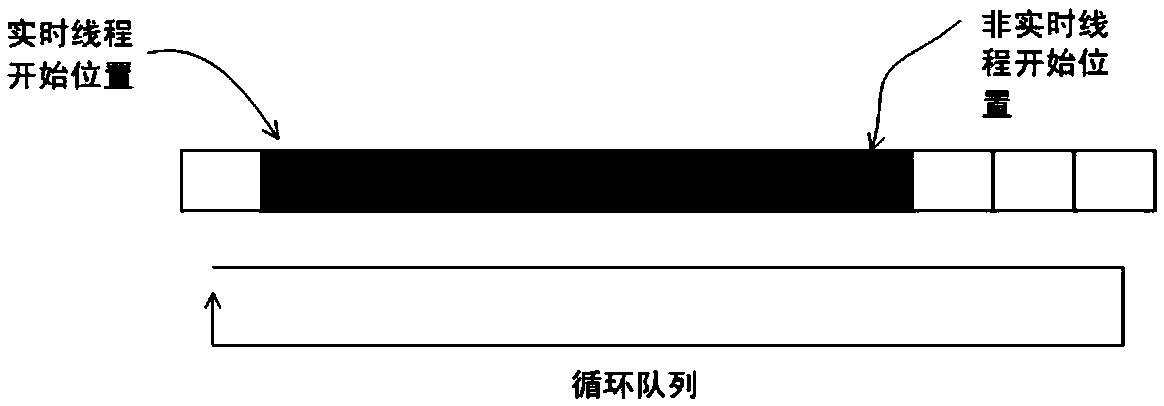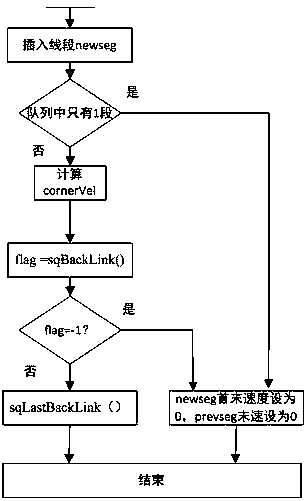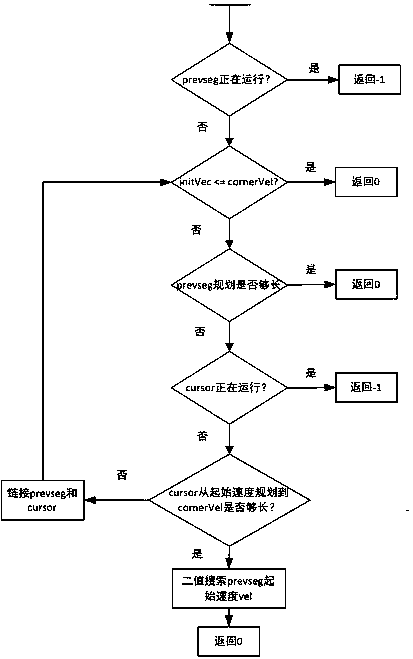Double-thread-based speed preprocessing algorithm
A preprocessing and dual-thread technology, applied in the field of computer algorithms, can solve the problems of increasing the burden of real-time threads, increasing the amount of program calculation, reducing processing efficiency, etc., to achieve the effect of reducing the amount of program calculation, improving processing quality, and improving processing efficiency
- Summary
- Abstract
- Description
- Claims
- Application Information
AI Technical Summary
Problems solved by technology
Method used
Image
Examples
Embodiment 1
[0036] A kind of speed preprocessing algorithm based on two threads, its method comprises the following steps:
[0037] figure 1 shown, including the following steps:
[0038] Step 1: set up a circular queue for storing line segments (the storage line segments can be straight lines or circular arcs), use the first segment of the unprocessed line segment in the queue as the real-time thread start position, and use the last segment of the unprocessed line segment in the queue as a non-real-time thread start Location;
[0039] Step 2: Divide the speed preprocessing algorithm into real-time part and non-real-time part, wherein the real-time part is placed in the real-time thread to run together with the speed planning algorithm, and the non-real-time part is put in the non-real-time thread to run together with the program for inserting line segments;
[0040] Such as Figure 5 As shown, the real-time part of the implementation process in the speed preprocessing algorithm is as ...
PUM
 Login to View More
Login to View More Abstract
Description
Claims
Application Information
 Login to View More
Login to View More - R&D
- Intellectual Property
- Life Sciences
- Materials
- Tech Scout
- Unparalleled Data Quality
- Higher Quality Content
- 60% Fewer Hallucinations
Browse by: Latest US Patents, China's latest patents, Technical Efficacy Thesaurus, Application Domain, Technology Topic, Popular Technical Reports.
© 2025 PatSnap. All rights reserved.Legal|Privacy policy|Modern Slavery Act Transparency Statement|Sitemap|About US| Contact US: help@patsnap.com



